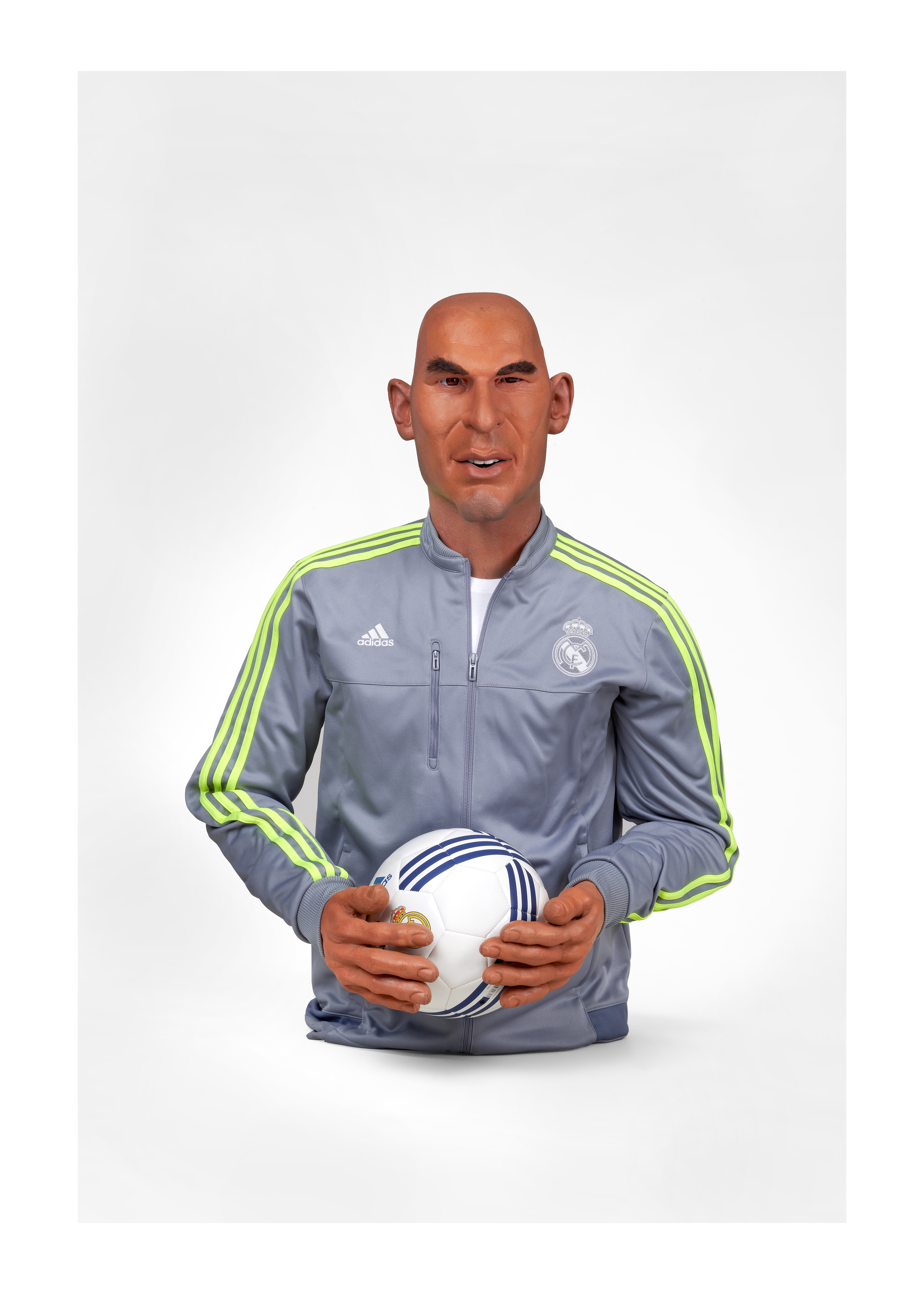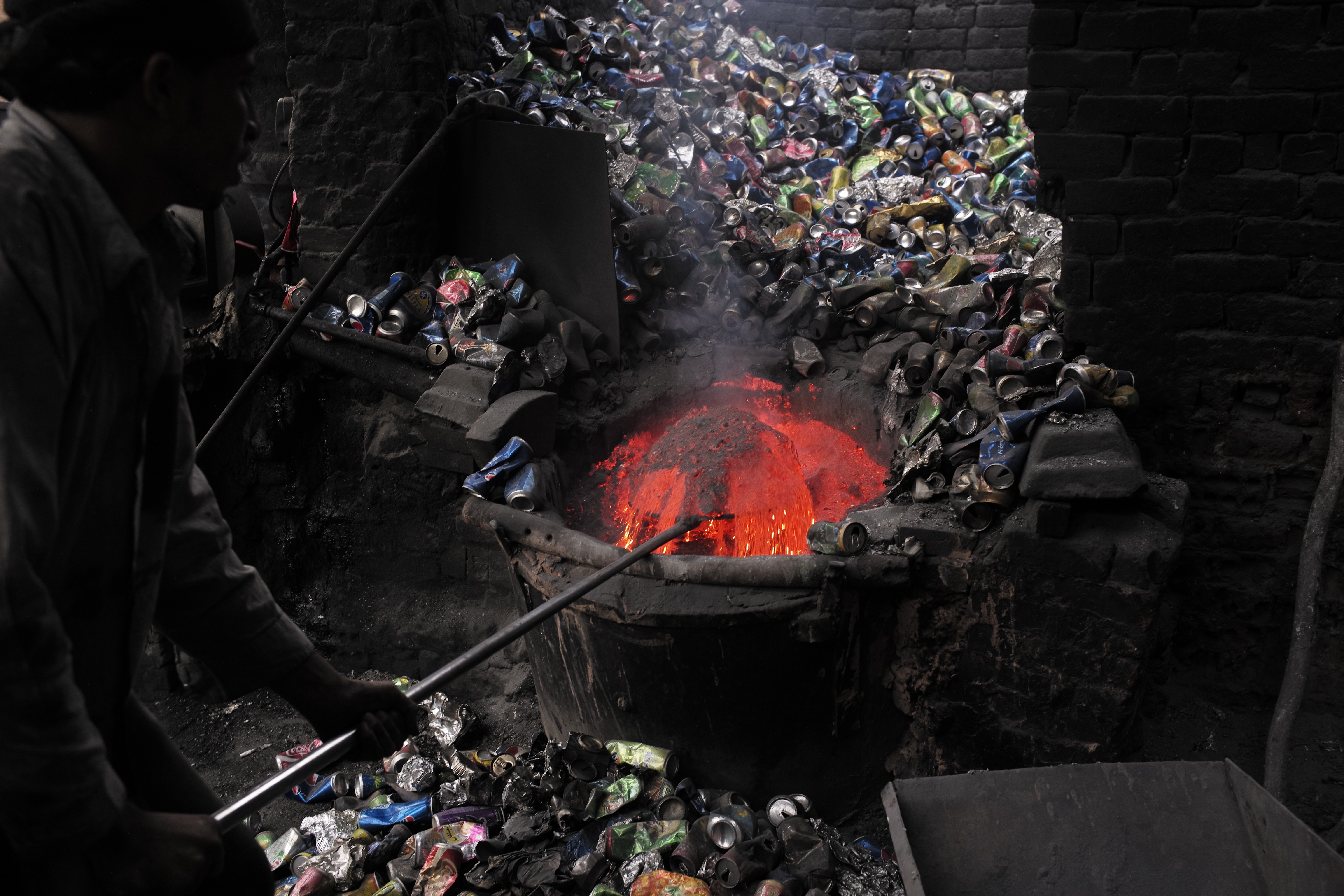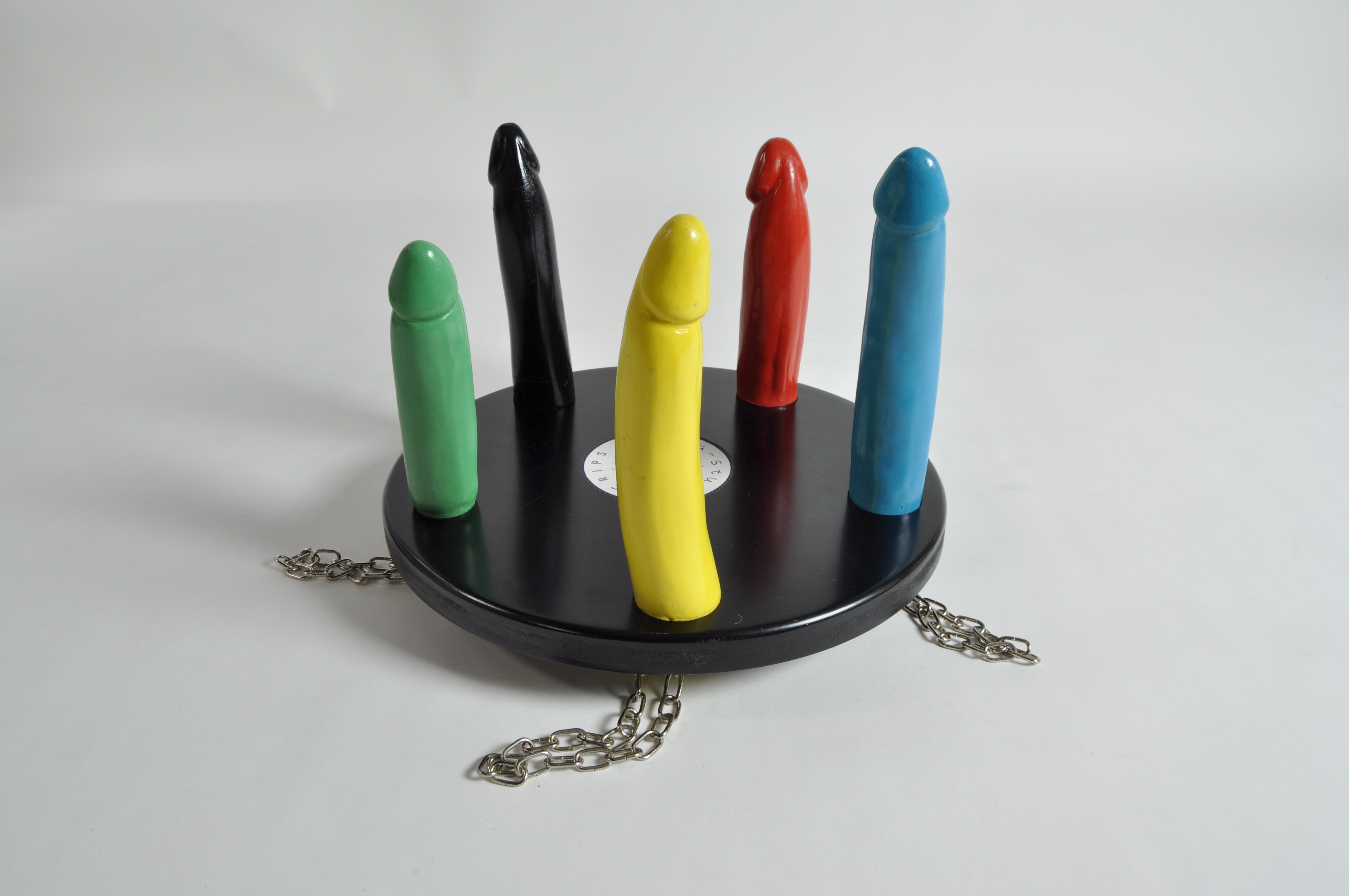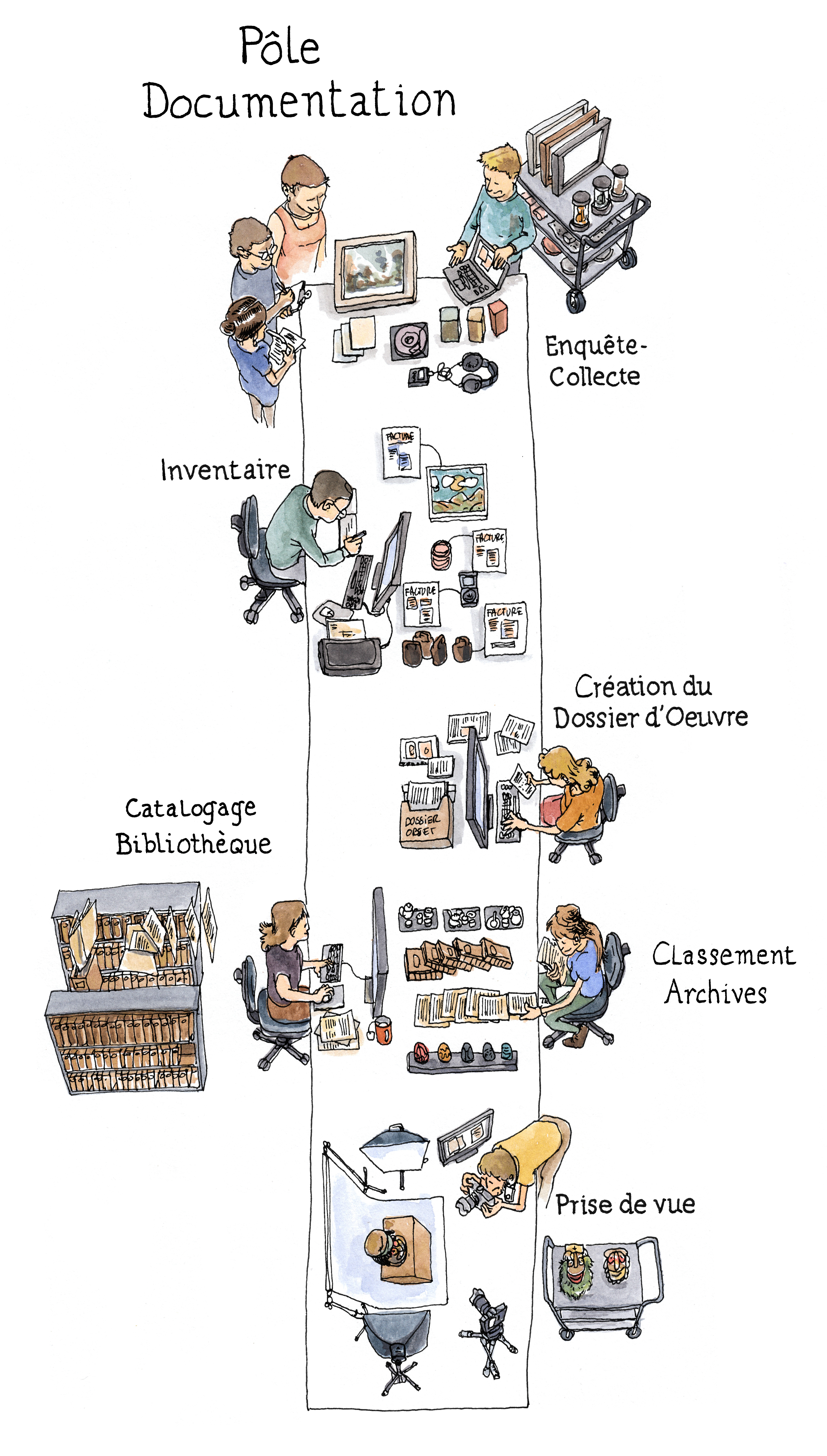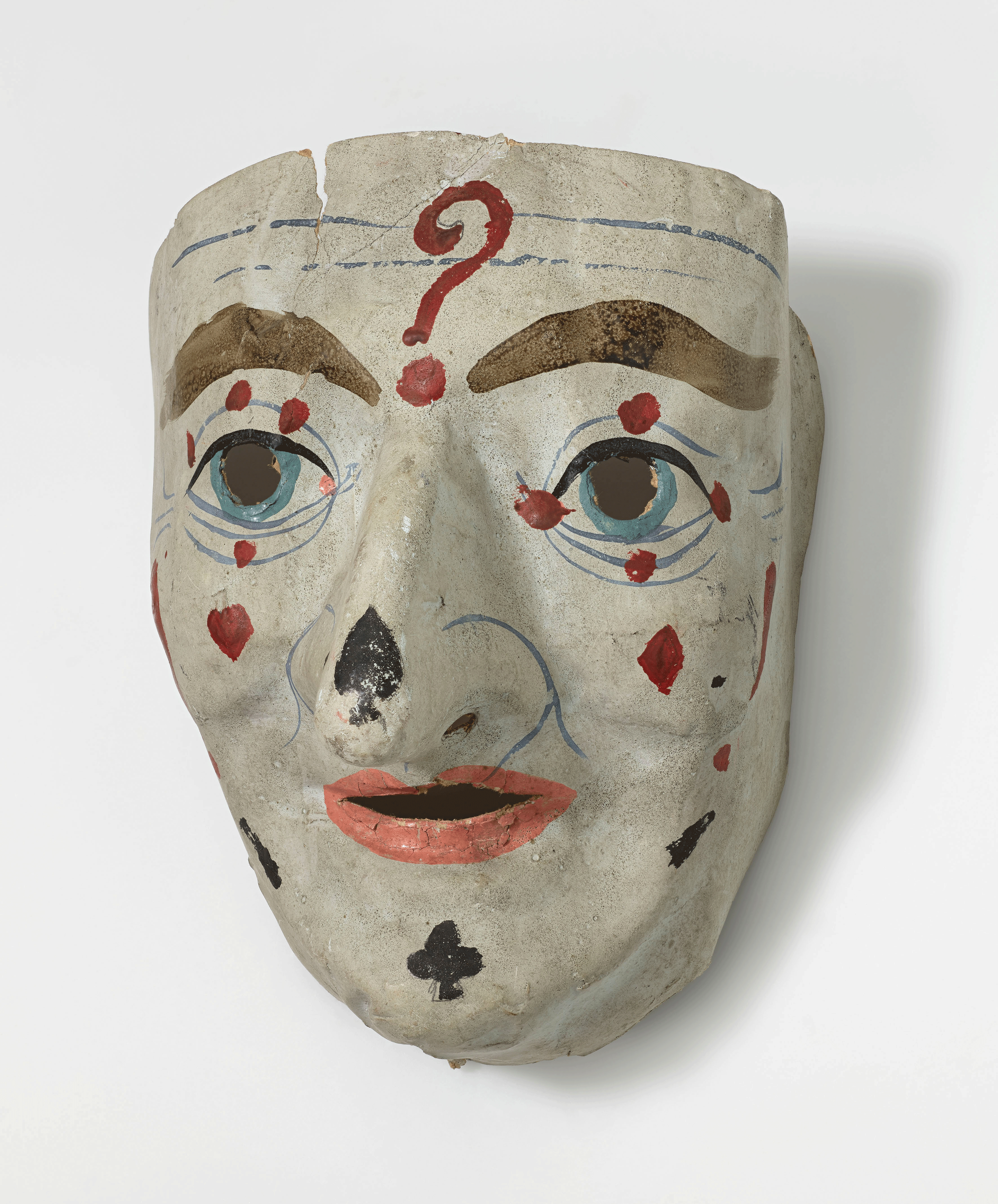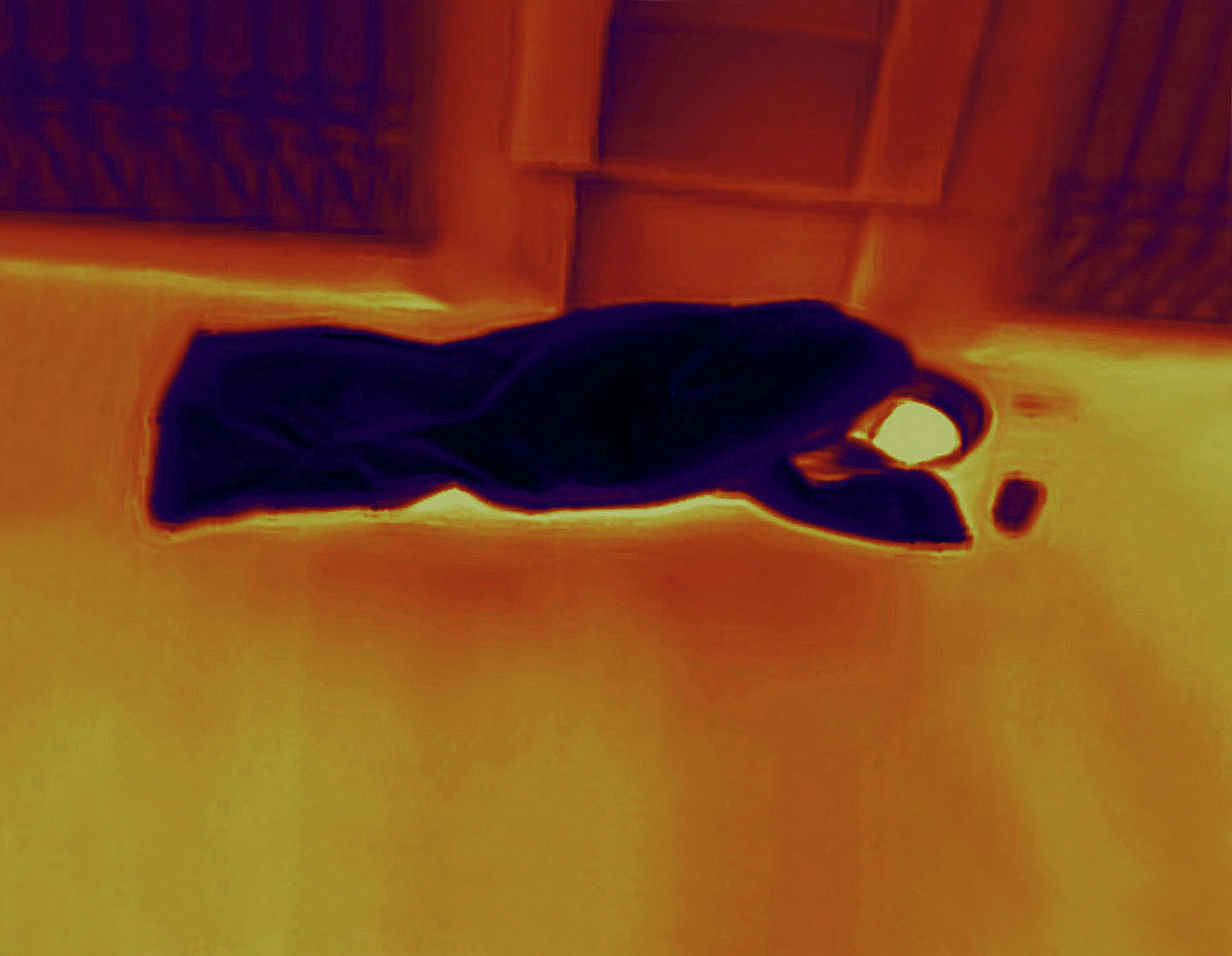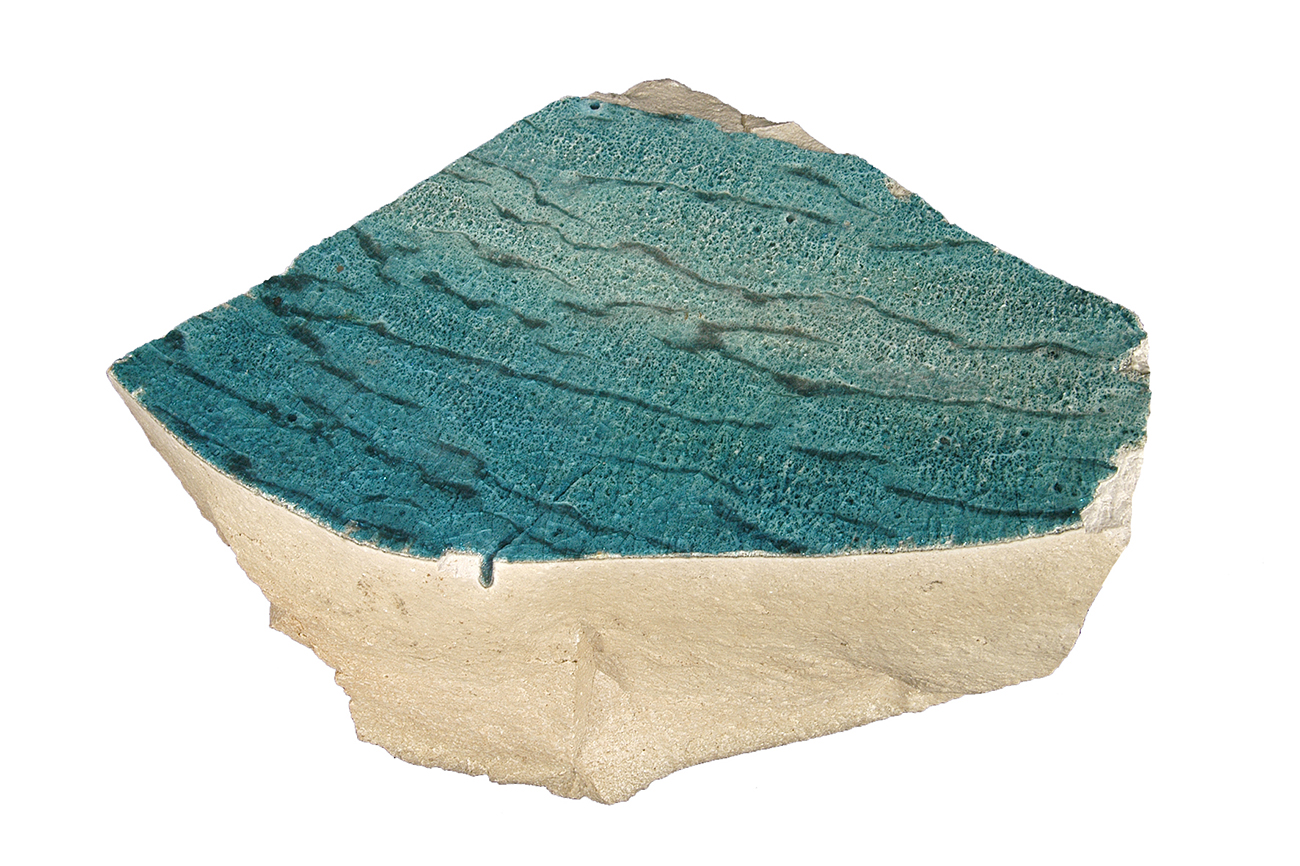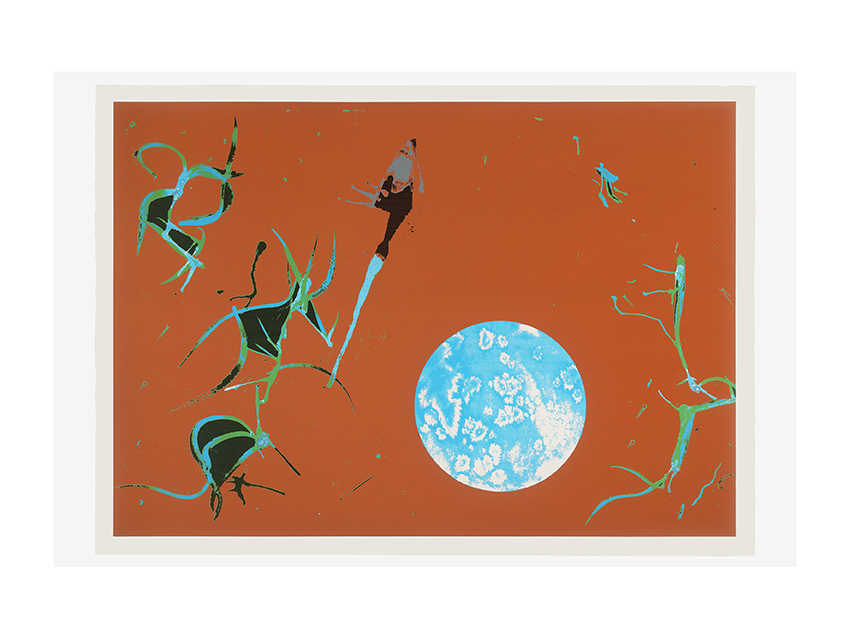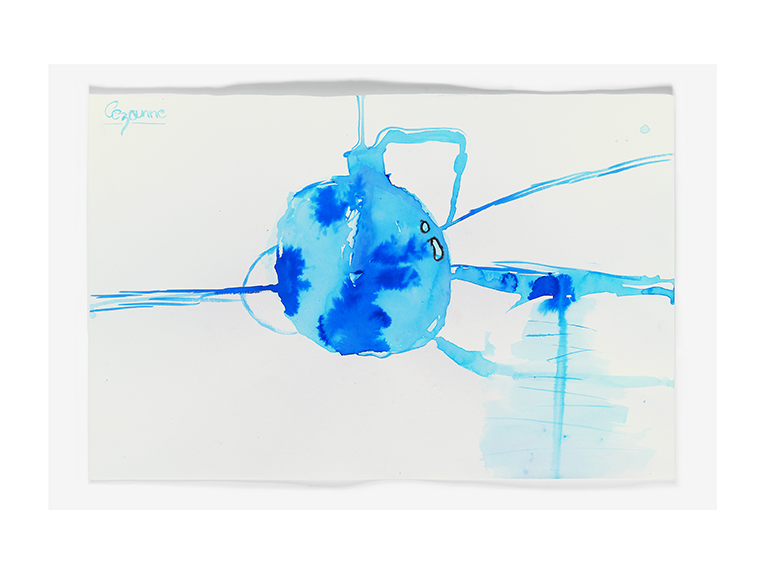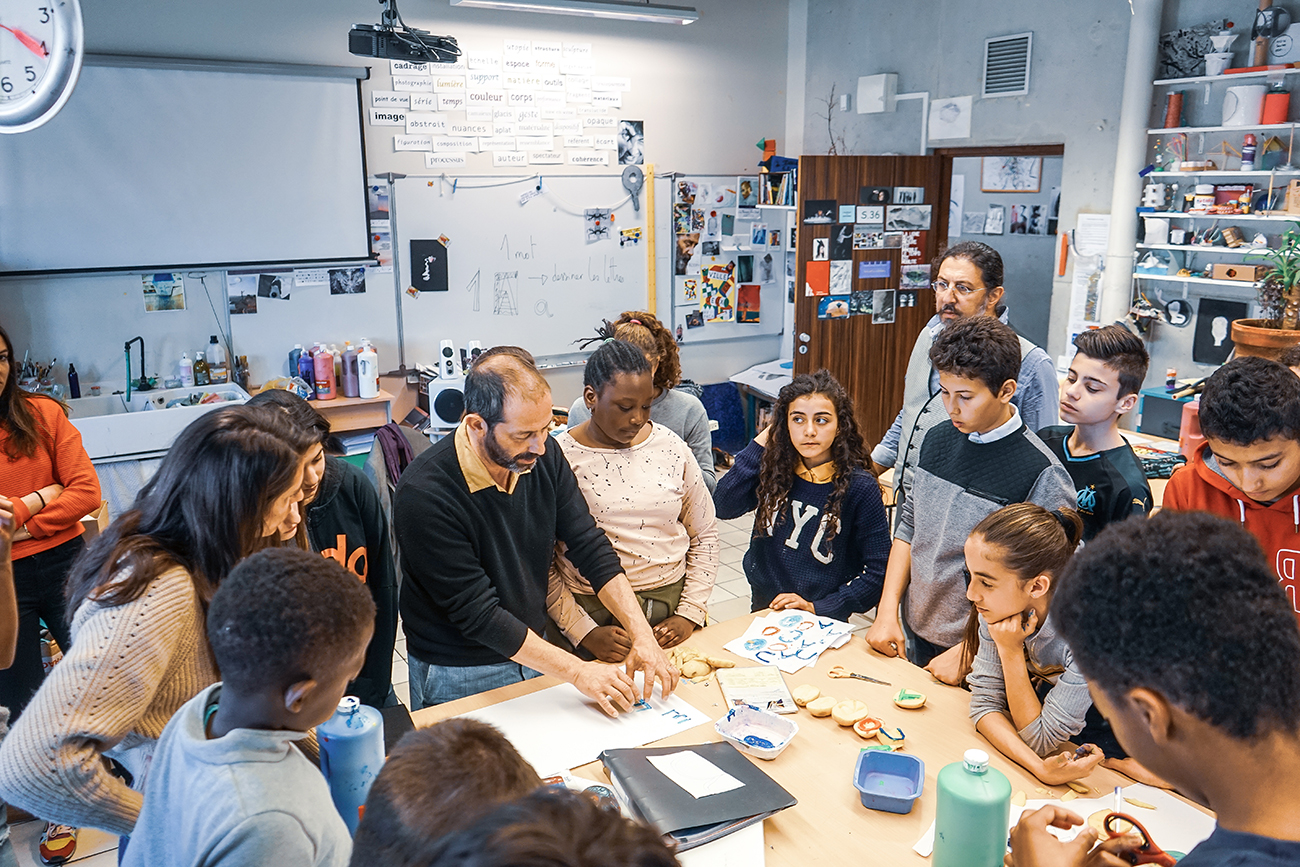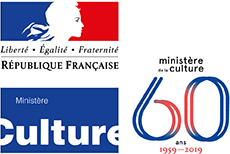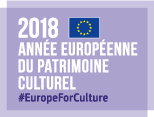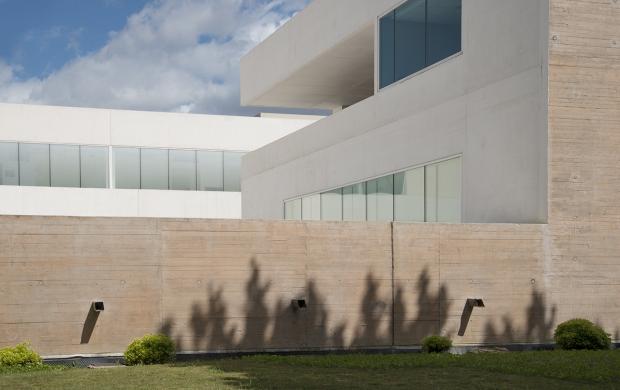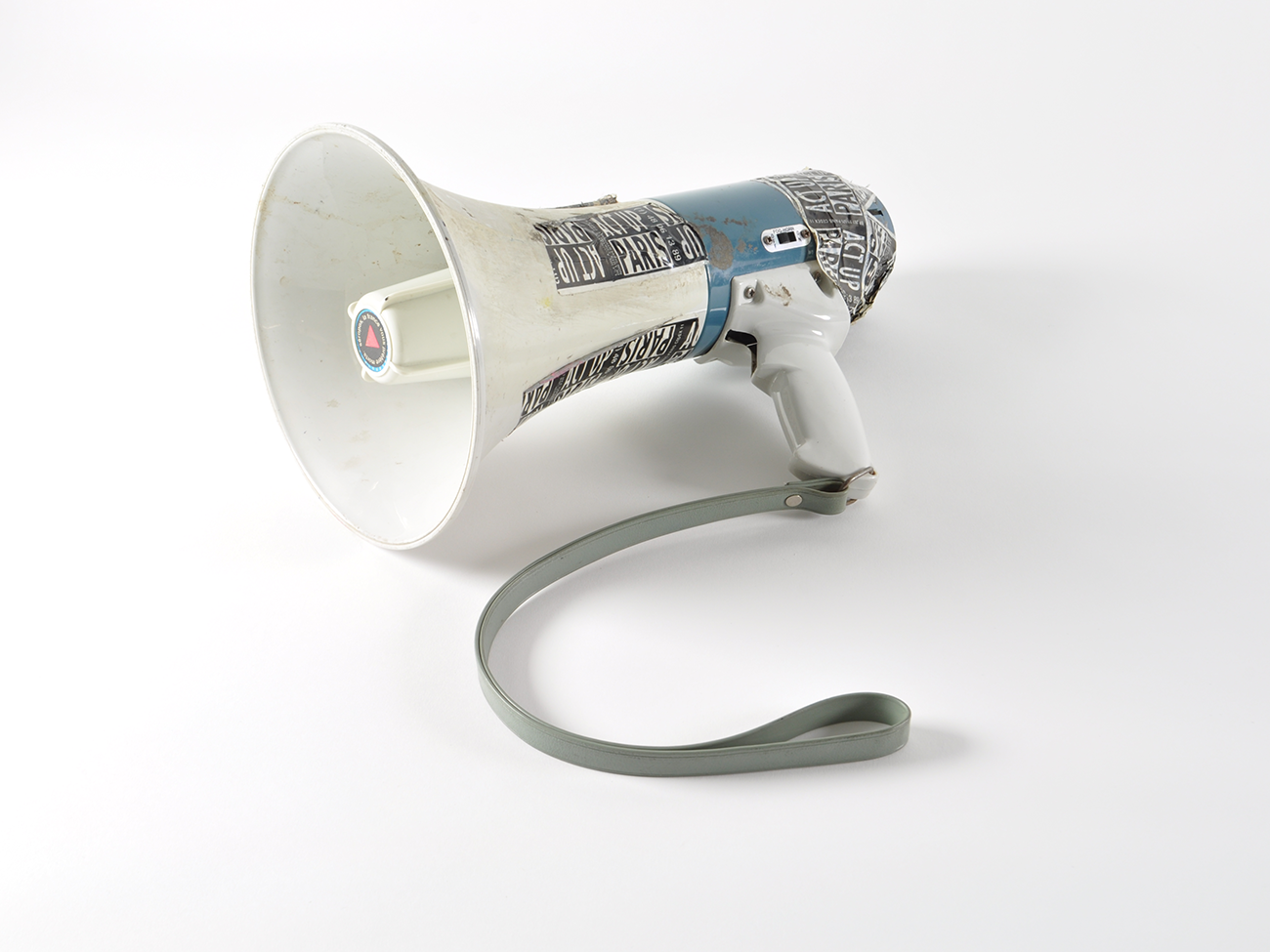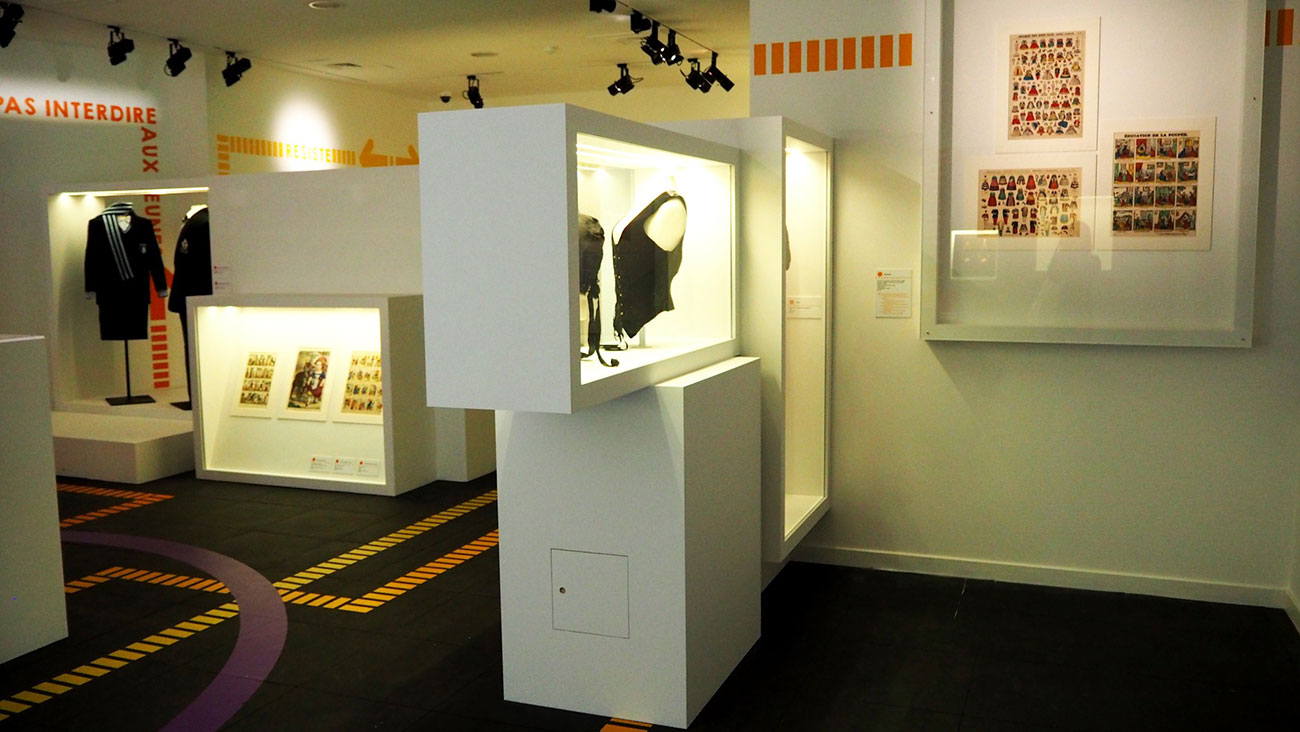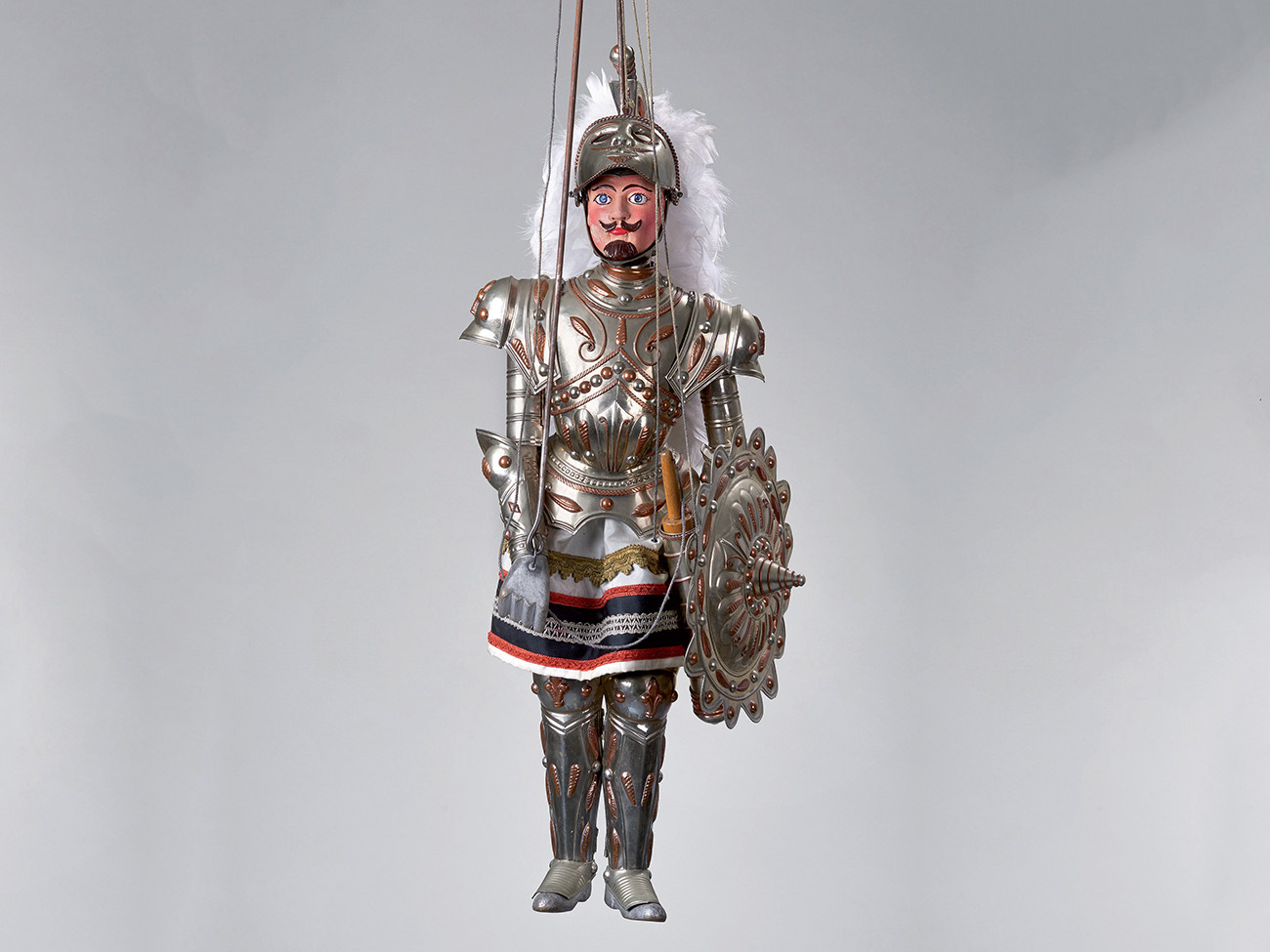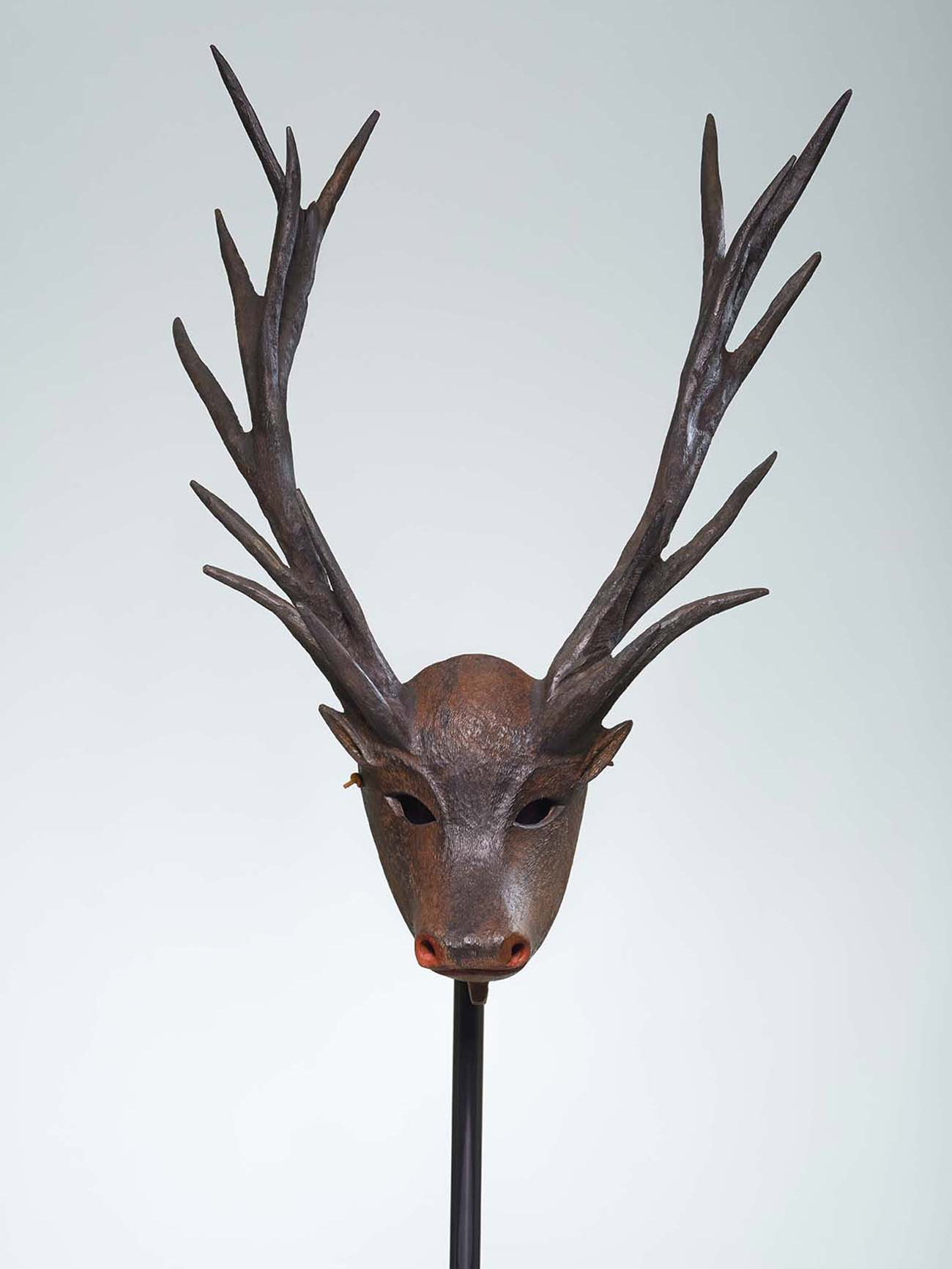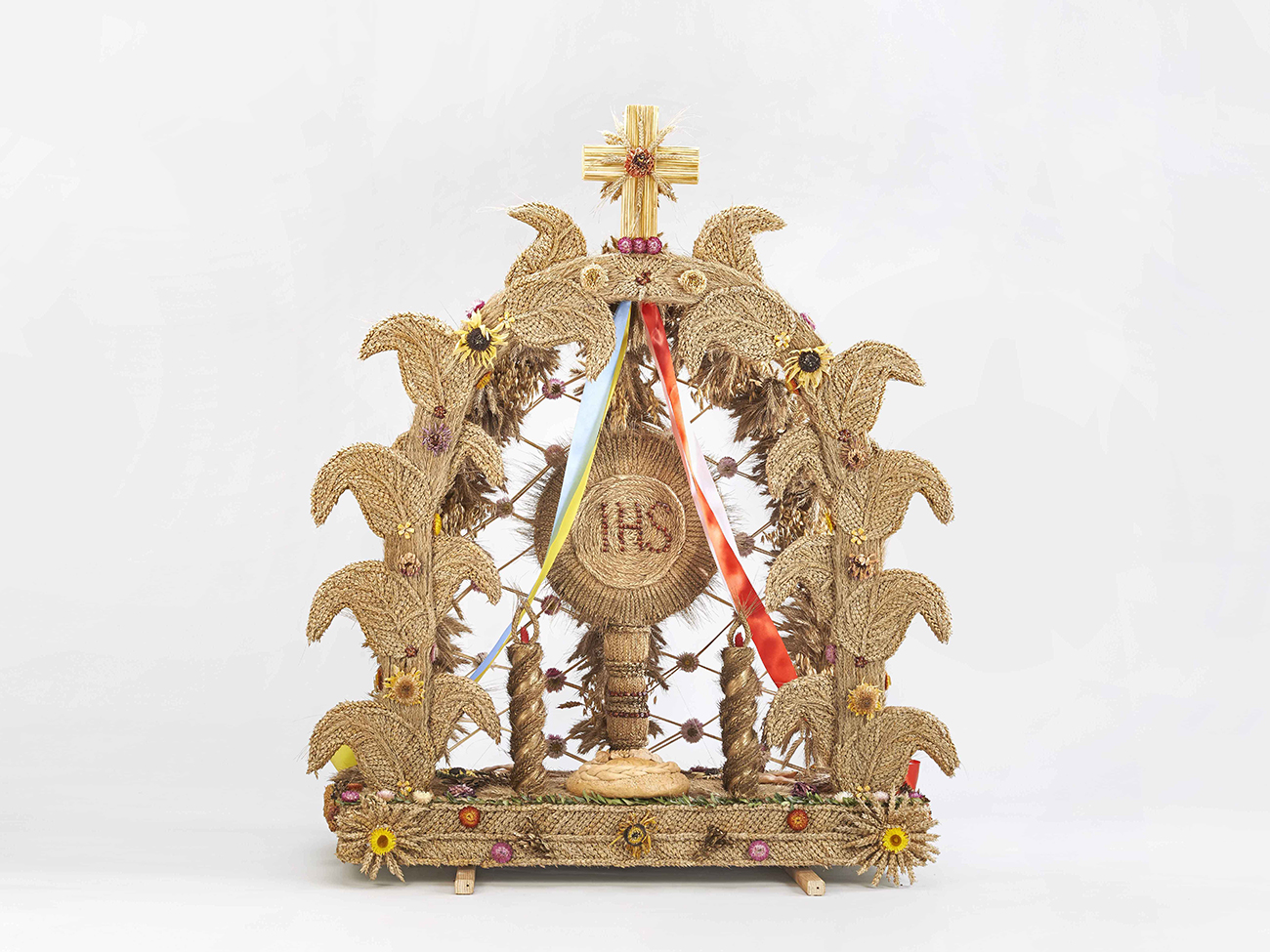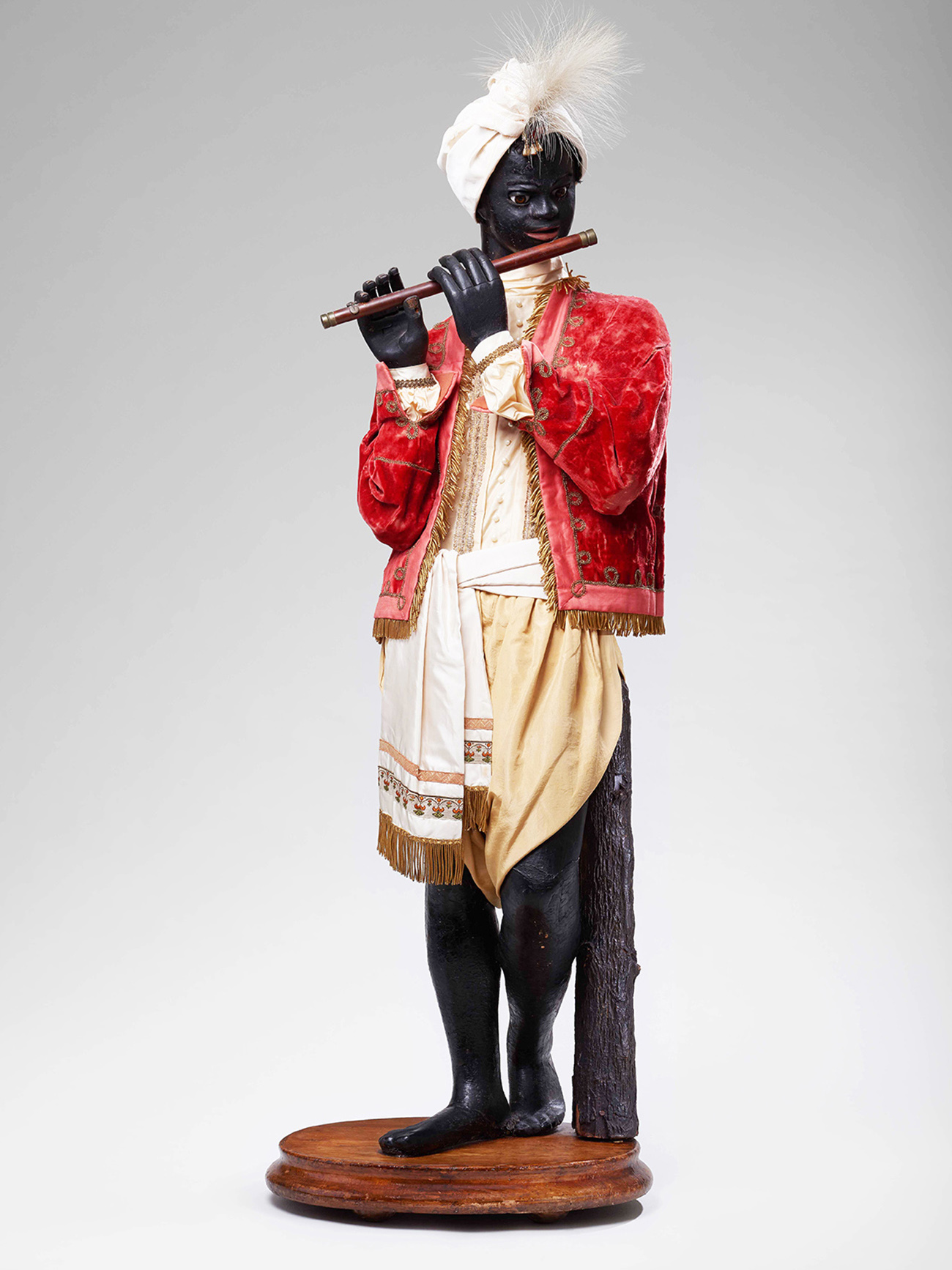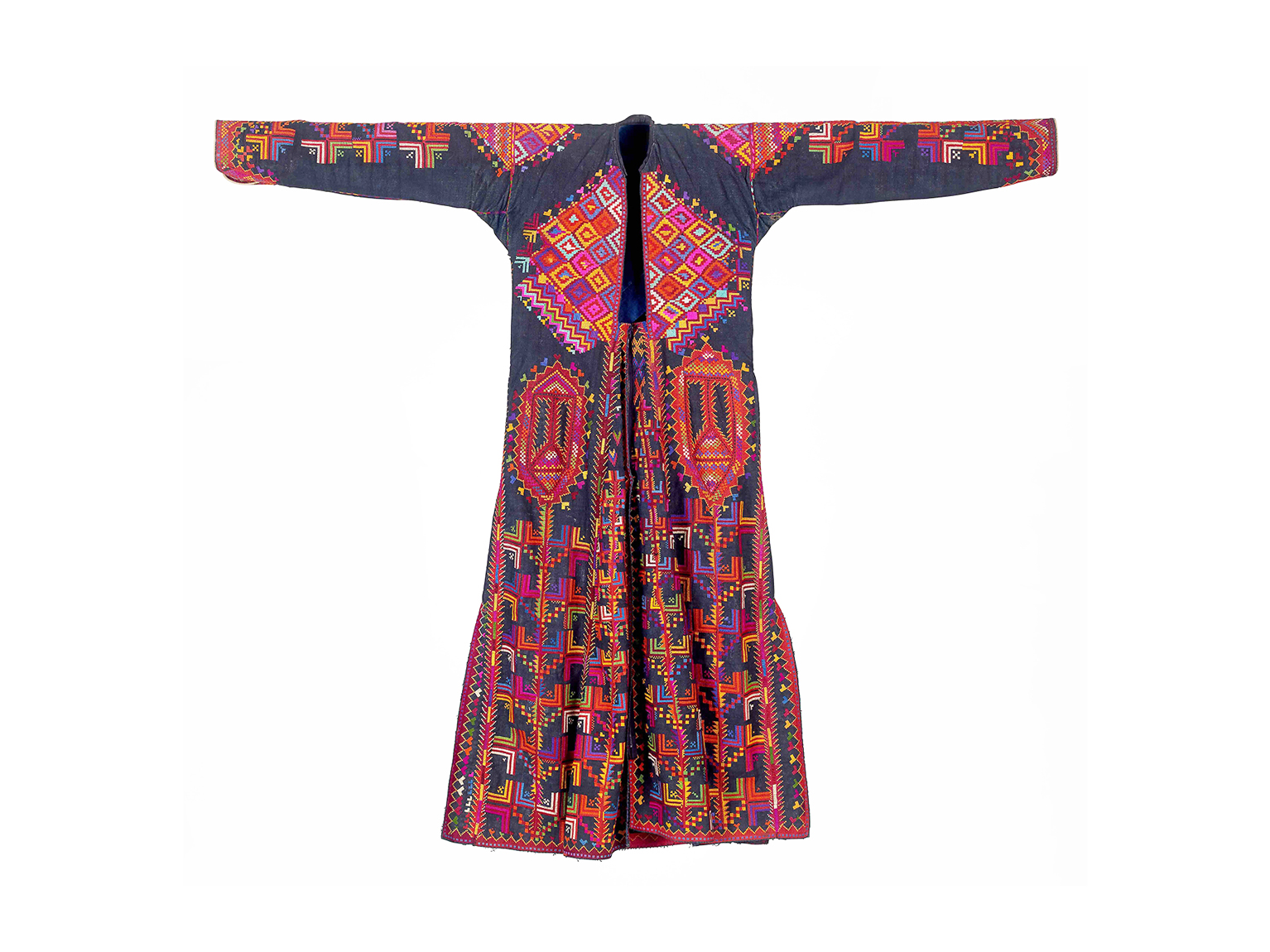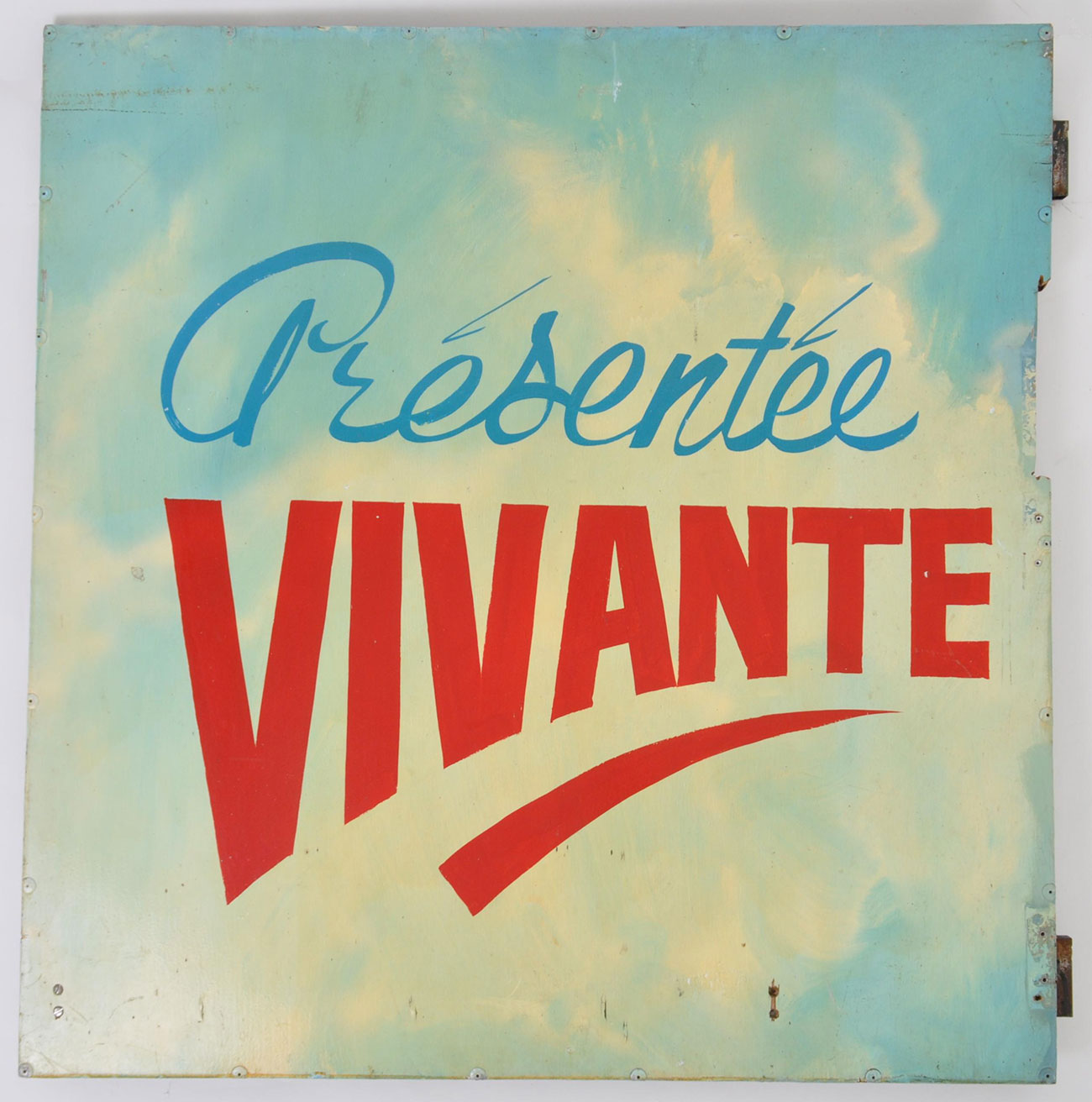| Mucem (M.) |
Antoine d’Agata, you started working on the health crisis at its very beginning, even before the first lockdown...
|
| Antoine d'Agata (A.A.) |
As soon as the pandemic started, I became interested in what was happening in China, and started collecting images on the Internet and social networks. I was in Mexico at the time, and as soon as I returned to France, I was told about the first emergency centre for the detection of the virus, in the Val-d’Oise, in Taverny. I went there every day. There, the virus became “visible”, inhabitants came to be tested, and I photographed carers, nurses, municipal police, journalists, politicians... I worked every day in Taverny for eight days, until the day before the lockdown in France. On the evening of 16 March, when the lockdown was officially declared, I walked all night in the streets of Paris and photographed the empty streets. I walked blindly, not knowing what would happen to this situation that I experienced as a state of emergency... And I continued, during the 55 days of lockdown that followed, this frenetic and compulsive drift, day and night, trying to capture and report on the course of events.
|
| M. |
Did you feel a sense of urgency?
|
| A.A. |
The situation was exceptional, historic, and surreal. I repressed the temptation to lock myself up, opposing the forced immobility of confinement with my own wandering, which was a way of taking a stand, resisting fear, and putting myself into action. As always in a creative process, it was necessary to define a territory and a protocol, and despite numerous police checks, the entire city offered itself as the forced context of an artistic act of resistance. And it had to be done from the first day, and the effort continued every day, so as not to enter a cycle of doubt and renunciation.
|
| M. |
Why the thermal device?
|
| A.A. |
Because there was nothing tangible to photograph and I wanted to give an account of the collective fear, I chose this specific tool, the thermal camera, which captures another level of reality. Also, because it measures heat and not light, it takes the eye to the inside of beings and objects. The type of camera I used is very rudimentary and doesn’t show much. It shows what you don’t see and doesn’t show what you do. It allows me to look beyond the surface of things, beyond the visible and the perceptible. Because it opens a new field to our gaze and thus to our consciousness, it seizes the possible emotional and physiological states of foreign bodies, the heat flows of mineral and vegetable masses which, usually, refuse to be gazed upon, thus condemning any gazing that does occur to be satisfied with a thin layer of reality. Thermography also allowed me to avoid a too literal documentary approach. It captures the heat and movement of bodies, but also their isolation in the cold mass of concrete and their destitution in the streets that have become inhospitable and threatening. The few passers-by I met avoided even exchanging glances. The most precarious and most exposed seemed to have been banished from the human race, and the camera seemed to lock them up even more in their heroic decline. But this technical dimension of thermal imaging revealed all its poetic and aesthetic potential when I was able to penetrate hospital Covid-19 departments. There, rooms and corridors were teeming with humanity. In hospital rooms, patients were still and silent, to the insidious sound of respirators. At their bedside and in corridors, carers struggled in an incessant movement of accelerated, repetitive acts, but it was life force and vulnerability that the camera captured. Acts of care in the face of illness in intensive care units are transfigured by thermal measurement. From the most prosaic of acts such as washing a body, all that remains is the gentleness and empathy of nurses, orderlies, and doctors, and also the feeling of powerlessness that sometimes seems to inhabit them. This existential, organic proximity, without filter or superfluous precaution, projects the banality of illness and death into a universal, deeply human abstraction, closer to black magic than to spirituality. My experience of the hospital, as seen through the filter of the thermal device, was a hallucinatory journey. The images show figures, forms and intensities rather than situations that one would call real. I had to show the intensity that overwhelmed the world outside, the world of those who, for reasons imposed on them, did not have the opportunity to withdraw temporarily from the real world to take refuge in a virtual relationship with the outside. For a few weeks I had the privilege and responsibility of sharing this sensation of isolation and strength, of living in the proximity of beings reduced to their simplest political and physiological expression – to what Giorgio Agamben calls “naked life”. All this was made known to me in an extreme and brutal way, but with an intensity, however traumatic, that I can only describe as revelatory
|
| M. |
Were all the photographs in the exhibition taken with a thermal camera?
|
| A.A. |
In the spring of 2020, I produced 6,500 images in the streets of Paris and 6,500 images in nine hospitals, retirement homes and emergency centres in five French cities. Of these, only a few hundred were taken just before the lockdown with a traditional camera. The same goes for the images I made during the lockdown in three accommodation centres in Essonne, where I anonymously photographed refugees who were living in particularly difficult conditions of isolation and survival. A few rare images were taken on the street and in hospitals with a cellphone, because I felt the need to return sometimes to a more tangible description of something that is horror, however banal. I sometimes felt the need to return to the real, as if crushed by this accumulation of almost abstract, highly pictorial images. I also use other types of images: X-rays of Covid-infected lungs, collected from Nancy University Hospital, and microscopic images of the virus taken by Marseille University Hospital. Subsequently, as part of the creative residency at the Mucem, I collaborated with teams at vaccine hubs in Madrid and Marseille. The residency also initiated a reflection on professional museum practices, and the conservation and restoration of objects collected by the Mucem from the lockdown. With the assistance of the CICRP (Interdisciplinary Centre for Heritage Conservation and Restoration) and the CERIMED (European Centre for Research in Medical Imagery), I used various imaging techniques to capture the symbolic nature and importance of these objects in our common imagination. I thus explored, in a paradoxical way, the interaction between inanimate objects and living bodies, the process of contamination, the idea of fragility and that which follows from it – essential and imperative yet often ignored depending on whether one conducts this research in the space of the hospital, the museum or the street.
|
| M. |
While Antoine d’Agata photographed the world during the pandemic, the Mucem launched a collecting drive under the banner “Life under lockdown” in order to document the daily life of French people during this unprecedented period. How is this initiative relevant for a museum of civilisations?
|
| Aude Fanlo (A.F.) |
The collecting drive, launched at the initiative of the museum’s management, was also born of this sense of urgency: it was a question of reacting to the shock and re-establishing a link with our audiences who could no longer come to the museum and, at the same time, of building a small part of the memory of this worldwide situation, thereby making it a collective heritage. This drive was therefore improvised in the face of an unforeseen, not to say unthinkable, situation, but at the same time, it was perfectly logical, because collecting is an organic tradition of the museum. This allows us to show aspects of our societies, their long or, on the contrary, brutally rapid mutations, from the point of view of the players who make these societies and live these evolutions. It is a question of going into the field, interviewing people, bringing back significant objects, and associating them with the testimonies of those who make them, use them and give them meaning. These documentary assets are essential for understanding the objects that join our collections. This is because many of our collections are thus constituted in the mode of a “survey-collection”, either to safeguard a past that is about to disappear or, as in this case, to depict the immediate present. Generally, it is researchers who investigate. During the lockdown, this would have been difficult. We therefore inaugurated a new form, that of direct collecting via the web and social networks, in a participatory approach. In a second phase, we recruited a postdoctoral fellow, Simon Le Roulley, from the Institut des Sociétés en Mutation en Méditerranée (SOMuM) at the University of Aix-Marseille, in order to work more methodically on the objects that were collected and to explore other fields. We thus moved from “survey-collection” to “collection-investigation”.
|
| M. |
How did the selection work go?
|
| A.F. |
The “Life under lockdown” collecting drive was initially a photographic collection. We invited the public to send us an image of an object that was emblematic of their daily life during the lockdown, accompanied by a written testimony that explained the meaning the donor attached to it. We received over 600 proposals, which we have kept in their entirety, without selection. Out of all this material, we invited about 170 donors to send us, in addition to the photograph, the object that it represented, and in the end about 120 objects were physically sent to the museum to follow the process of entering the collections. So it is not a selection, but rather a 3D sample of the photographic collection. The criteria were pragmatic: we wanted to be able to show the thematic lines of force that emerged from the whole, through objects that could be reasonably preserved (which led us, for example, to keep only a packet of rusks or a jar of flour in photographs), that were really intended to be given away (which was not the case, for example, of a hopscotch drawn on the floor of a living room, or the keys to one’s own house), and objects whose materiality carried meaning in itself. For example, we have received many testimonies of sports practices at home, but a yoga mat does not say anything by itself. In contrast, a traditional bicycle transformed into an exercise bike speaks immediately, and not only in an illustrative way: it is an object made by and for lockdown. In the exhibition, we want to show, even in an allusive way given the mass that it represents, the majority of the proposals, and we play on the relationship between materiality and immateriality, and on the differences in density between these supports: photographic images, physical objects, words and testimonies.
Finally, we present different objects – the ordinary, the everyday, the intimate – but which, in their encounter with Antoine’s acute experience, raise quite radical questions of a very deep humanity, which the crisis will have revealed and exacerbated around relationships to oneself and others, to order and disorder, to time and space, etc.
|
| M. |
Precisely, how did the meeting between Antoine d’Agata’s work and the collecting drive led by the Mucem for this exhibition come about?
|
| A.F. |
We wanted to organise a creative residency and an experimental exhibition as part of the European project “Taking Care”. This programme brings together ten or so museums of society and culture from around the world, which use the notion of care to work on new conceptions of the role of museums: in the figurative sense, how can they be seen as spaces of care in the face of environmental and social issues? The “Lockdown” collection offered the opportunity of a mise en abyme of these questions, because the pandemic revealed the human fragility of each individual, as well as the vulnerabilities of our societies on a global scale. We offered a subjective reading of our collection to Antoine d’Agata. He was quickly chosen because of his experience during the lockdown. His images were in resonance, tension and contradiction with ours; they show the two sides of the same period, the one dubbed the first lockdown: our collection focuses on the narrowed life, consigned to the dimensions of its domestic interior, while his images carry the external rumour of streets, hospitals and all that tucked away people perceived from afar, through newspapers and daily statistics.
It must also be said that beyond this concomitant situation between our call for donations and Antoine d’Agata’s input, there was this sensitive, critical articulation of his work with this reflection on care, because he never ceases to show the precariousness, the relegation of the most disadvantaged, and the violence of societies. His photographic series touch on the political and philosophical character of care, while being wary of a compassionate language. Some of the photographs, such as rows of houses and tents, through the serial mechanics and clinical neutrality of images, suggest the ambivalence between care and control, and medical emergency and state of emergency. Infrared imagery goes against this dehumanisation to show, on the contrary, the attention of acts of care and comfort in the hospital, which were basically the only possible spaces of contact. It produces ghostly, fictional forms that are almost religious, tragic and immemorial. These different forms of anonymity create a strong contrast with the very intimate, highly autobiographical character of the objects from the “Lockdown” collecting drive. Ours and that of the artist thus show two collages of simultaneous realities, very much in tension and through a difference of registers and approach. It was a challenge to work on this gap. To see how all these aspects could intersect with, respond to, and oppose each other. We play with the effects of plastic collage between Antoine’s images and those of our donors, weaving implicit links or, on the contrary, highlighting differences. In this confrontation, certain aspects of the collecting drive, for example the recurrent humour of many of our donors, disappear. The exhibition does not seek to restore what was collected, but rather Antoine’s subjective vision of it.
|
| M. |
Antoine d’Agata, how do you view the collecting drive carried out by the Mucem?
|
| A.A. |
I think what interests me most about this collection is the degree of alienation of which it is a glaring symptom. We have not finished measuring the political and economic consequences; the systemic mutations engendered by the psychological and emotional distress; the financial difficulties; and the state of social alienation into which people have been plunged in most contemporary societies – a certain form of mental confinement and psychic slippage, which doubles physical confinement. The pathology common to the majority is certainly recurrent in what the museum collected. The nature of the malaise that is spreading, which is due primarily to a loss of privileges and freedoms, the spread of economic demands, and the extent of the political consequences of these social pathologies, challenge and fascinate me. But I remain pessimistic about the capacity of individuals to resist with strength the conditions of life that are imposed on them. Feelings of selfish comfort and renunciation of experience seem to be ingrained in the character of the contemporary human. Even as the financial elite that governs our lives emerges strengthened from a timely crisis, its market, media, and political enterprise have taken advantage of the event to intensify, perhaps irreparably, the virtuality of human relationships. The intensity of the times attracts me, but I have the feeling that people are becoming increasingly passive consumers and spectators of their own existence. As a photographer and as an artist, it was inconceivable to accept to lock myself down. The reality of the world questions me, disturbs me, fascinates me, and often violates me. But I live this reality in a mode of absorption and contamination. I am interested in the other side of things; I make use of the world and run the risks inherent in my convictions. The exhibition is built around this dichotomy between inside and outside, the visible and the invisible, immobility and movement, yield and expense, and law and excess.
|
| M. |
You have named this exhibition “Psychodemia”. What does this word mean?
|
| A.A. |
It is a word that does not exist, or not yet. And that’s the whole point. I ended up finding a rare occurrence on the Web, to designate the as yet unknown effects of the pandemic and lockdown – effects that are social, psychic and political. In the context of an unprecedented type of crisis, I found the idea of introducing a new word and inventing a meaning for it attractive. This word, psychodemia, evokes, suggests, intrigues, and seems to say something, while the meaning remains to be found. The challenge of the exhibition, and of the book that will accompany it, is precisely to interpret without prejudice or certainty the event that has taken place. I imagine that we all understand this word psychodemia in different ways, and for my part, I see it as something threatening, which shifts the stakes. It’s exciting to open up a space for doubt, questioning, contestation and resistance. In the book that will accompany the exhibition, I have entrusted the philosopher Sandra Laugier with the task of questioning it, redefining it, taking the risk of attributing an open definition to it, and looking at an unknown horizon that is always deferred.
|
| M. |
How is the exhibition organised?
|
| A.F. |
In Antoine d’Agata’s exhibitions, there is always an extreme attention to form, and the same goes for his books, which are quite radical editorial objects. The form, here, had to translate the density, tension, overflow and accumulative effect of the artist’s work. We wanted to suggest this invasive character by making the images explode on the walls, on the floor, and on the windows. In contrast, the showcases enclose and focus in on the objects within, highlighting their preciousness – a part of the game between outer and inner. It is also a way of evoking the material care given to objects in museums, and of following the thread of a metaphor that has guided us in comparing the entry of objects from the collecting drive into our collections, to a kind of lockdown. When they enter our storerooms, they will be sacred on a symbolic level, preserved and protected on a material level, yet cut off from the outside world for the following reason: they will no longer be accessible, except according to protection protocols reminiscent of those of the medical world, and of the famous social distancing in public space.
When constructing the visit route, we followed two narrative movements. The first is that of a logbook, which compiles the day-to-day experience of the artist and the autobiography of the donors of what we collected in several voices. The second is paced like a tragedy, in five acts, with a prologue announcing the setting up of the lockdown and its forerunners, and an epilogue that is not to be confused with a denouement, but opens up, like the title “Psychodemia”, towards a prolonged wait – a meaning that is elusive.
|
| M. |
What are the five chapters of the exhibition?
|
| A.F. |
For each chapter, we have chosen as titles words that activate a triple dimension: medical, political and museum. Health care workers and museum staff who take care of works of art use the same tools and the same vocabulary: “health watch”, “contamination”, etc ... And all this also resonates very strongly with Antoine d’Agata’s critical approach. So we looked for titles that, by their polysemy, would fit into each of these fields.
|
| A.A. |
The first chapter is entitled “Orders”, which is both a starting point and the state of things in a context that I experience as a society of control. The health crisis was the pretext and the context for managing flows and circulation. The “orders” are the symptom of reality as I have experienced it. We have delegated our freedoms to the public authorities who have taken over the social, economic, security and health management of our lives.
The second chapter, “Contagions”, is about viral contamination, on the physiological level, but also on the more immaterial level of hauntings, fears and rejections. For a long time, it’s a word I’ve often referred to, because that’s how I experience the physical reality of the world, and the possible mode of power relations that is imposed on us and that we must assume, as both social and existential beings. That’s how I function, in a physiological, amoebic relationship to the political and economic realities of the world.
The chapter “Treatments” refers to vital strategies developed to effectively manage the contamination of the world – senseless acts set against the violence that is suffered. Beyond all reason, the notion of care is at work in the dedicated contexts of the hospital and the museum, but on the street and in territories left behind by survival, fear subjects the individual to the brutal logic of performance.
”Thresholds” refers to the physical limit between inside and outside, which, during the pandemic, corresponded to distinct physical territories as well as various political positions. I had chosen to live these three months outside, to live the violence of the present time through my own experience. These days were intense, but the responsibility and demands were overwhelming.
”Processions”, the last part, is a return back to square one. I took photos in vaccination centres and queues that formed at the beginning of the summer of 2021 in Madrid and Marseille. What I perceived, above all, was a form of liberation, of conjuring up fear, but also of submission, a kind of renunciation and dissolution within the community – a return to conformity, to the obligatory order of things, and to an ordering of the world that takes us back to the beginnings of the pandemic.
|
| M. |
For the section entitled “Contagions” part, you said: “This is how I experience the physical reality of the world”...
|
| A.A. |
I live the world in terms of a permanent balance of power; I am in a weak position, economically, politically and artistically, because of the life choices I have always made. The principle of ‘contagion’ has been decisive, and fundamental, and has become a principle of life – from the tiny strategies of political struggle to an intimate relationship with illness, and with Aids in particular. I can only express myself or act in a tiny, clandestine way. Ten years ago, I published a book entitled Antibodies, and stated that only noxious, subversive, asocial, atheistic and immoral art is valid – an antidote to the spectacular infection that neutralises minds and distills death. I try to assume this function of antibodies, and I feed on this capacity of resistance that those I photograph have. In the exhibition “Contamination” in Hong Kong three years ago, I tried to inflect the meaning, the biases, the aesthetic and moral consensus in the manner of a contaminating agent. The title Virus, which in 2020 was the first stage of restitution in the form of a book and an exhibition carried out in the midst of the pandemic, was also a way of translating this need for radical positioning.
|
| M. |
It’s all about urgency. This immediacy is usually associated with the work of the journalist, but less so with the artist...
|
| A.A. |
While lockdown was the order of the day, I had the feeling that, apart from the formatted reports of Big Media which saturated the communication space, artistic and documentary fields were abandoned in favour of an inflation of intimist discourses. I quickly became aware of the need to establish a viewpoint, perspective and alternative experience to the dominant artistic practices. My position has always been, and desperately so, to understand and go beyond, through my actions, the circumstance and the event. I think in terms of intensity and urgency. This is not a question of profession; it is a question of living the world, of living violence, day by day, every day. I don’t ask myself questions about hindsight, intelligence, excellence or demonstration... It is in the experience itself that language is formed, and through language that experience is born.
|
|
